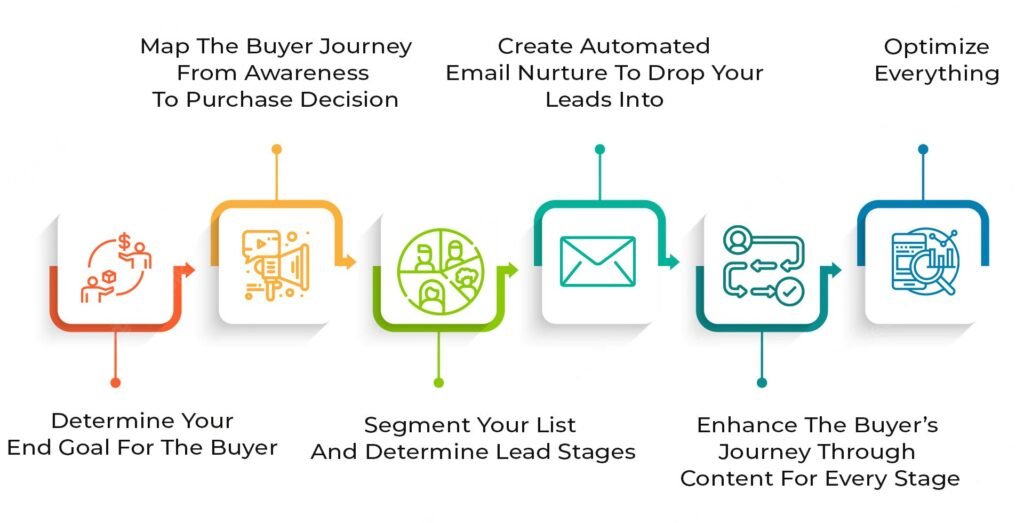
Top 5 Things to Consider while Creating Marketing Automation Blueprints
Introduction
As the number of Internet users increases, companies try harder to stay on view. They launch more online ads, email marketing campaigns, try to be present on all social media platforms, and strive to collect Big Data about markets and leads as a part of their lead generation strategy. As a result, manual work dependent on human intervention for transactional tasks is no longer enough. More and more businesses switch to semi- or fully automated marketing processes.
Marketing automation platforms are seen as a cost-saving measure and most marketers across industry domains are investing in it. The marketing niche also seems to have caught the bug as marketing automation implementation seems to be a trend. Now, although automation is great, it is not without its challenges. Without an appropriate plan and budget, the chances of succeeding with marketing automation are very slim.
It is always more important to do the groundwork first before adopting the new system. In this article, we will show you how to create marketing automation blueprints before investing your time and money in them.

What is Marketing Automation?
Marketing automation is the integration of data and processes from other sales and marketing channels into an organized central platform. A comprehensive marketing automation strategy works as a data hub which complement and organizes the customer journey. It integrates all of a business’s channels and outreach with the customer database.
The improvements marketing automation offers complement the benefits of customer relationship management (CRM) software. CRM and marketing automation software are mistakenly viewed as interchangeable. Marketing automation software does not store your customer information like a CRM. It is installed in addition to your CRM, like any other integrated application, to operate alongside that data.
What is the Marketing Automation Blueprint?
Suppose that you just purchased the perfect real estate property, and now it’s time to start building your dream home.
The location is beautiful, you’ve hired a talented construction team, and defined a set budget for the project.
The head contractor is ready to start, only there’s no blueprint to speak of. Would you give this project the green light? Probably not.
Why should developing your inbound marketing strategy be any different?
Similar to building a home, a marketing automation blueprint is essential to guiding your content creation, allocating your resources effectively, and assigning tasks to the right people on the team.
Creating an organized blueprint is the simplest way to make sure that any content you created is aligned with each stage of your buyer’s journey.
Without a marketing automation blueprint, you’re basically sending your prospects on a wild unmapped journey, with absolutely no direction in mind.
Now that you understand what marketing automation is, how it works, and what marketing automation blueprints are, let’s dive into creating your first marketing automation plan.

6 Easy Steps To A Successful Marketing Automation Blueprints
The following steps not only detail the execution of a solid marketing campaign, but each of these steps are ones that marketing automation can be used to improve and increase efficiency.
Step 1: Determine your end goal for the buyer.
What do you need the buyer to do? Buyers typically go through three key stages when buying; awareness, consideration, and decision. Always determine the end goal first to know where to start, getting from A to B.
Step 2: Map the buyer journey from awareness to purchase decision.
You want to plan from where they first learn about your product/service to the end of the funnel where they buy. Through your content strategy, the buyer can successfully navigate where they need to find what they’re looking for.

Step 3: Segment your list and determine lead stages.
Depending on how extensive your contact list is, lead segmentation will help for targeted campaigns. Once your lead lists are created, you can use targeted marketing for each plan.
Step 4: Create automated email nurture to drop your leads into.
It’s vital to maintain contact with your leads throughout the funnel, particularly if your organization has a long sales cycle. An email drip will keep your organization top of mind for all your leads, and move those closest to conversion closer to the purchase stage.

Step 5: Enhance the buyer’s journey through content for every stage.
This is where content is an excellent resources to provide a more tailored experience that speaks to pain points, addresses objections, and educates buyers.
Content could be landing pages, blog posts, gated assets, webinars, social posts, etc.
Step 6: Optimize Everything.
Your efforts will be in vain if your journey isn’t optimized to increase conversions. This is one of the many places where automation software comes in handy by telling you what’s performing well and where problems may be occurring in the journey so you can address them and win more deals.
This could be a broken link to a landing page the lead is supposed to land on. Or it could be unusually high bounce rates that may cause a disruption in your email service that you need to address.
It could even be that you have a blog post with no CTA (call to action) so your lead doesn’t know what to do next (fill out a form, schedule a sale call, download an asset).
Whatever it is- fix it!
Wrapping Up
If you’re a startup or smaller organization, you might not have the bandwidth or financial capacity to hire the teams needed to execute marketing plans to scale. Not all businesses have the resources available to grow as they need.
If that’s you, consider partnering with a marketing automation agency and outsource your project requirements to them. As a business owner or manager, your goals are to grow and expand, and you might need to implement marketing automation software. You can achieve this by relying on an agency’s expertise and taking marketing automation services to navigate you through your marketing obstacles.
If you’d like to learn more about how to create marketing automation blueprints, we can be a marketing automation services partner to your sales team members or marketing departments, reach out, and we’ll follow-up to schedule a free marketing automation consultation.



